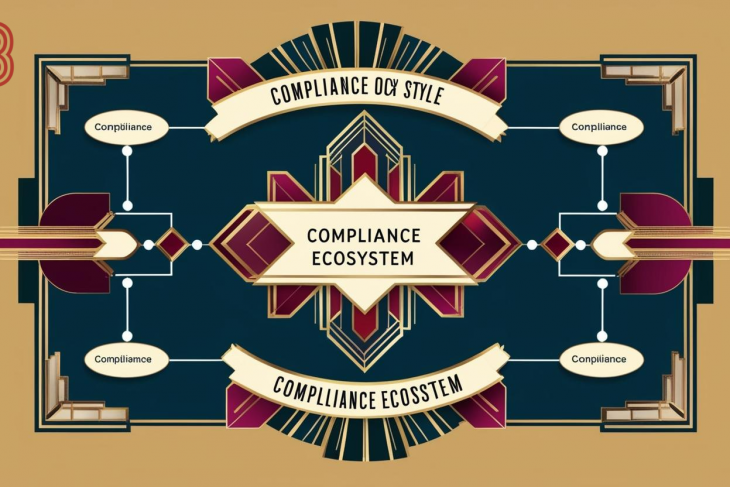
Introduction
Risk management is a fundamental aspect of business operations, ensuring that organizations mitigate threats and remain compliant with regulatory requirements. Among the most crucial tools in risk management are Track and Trace systems, Know Your Customer (KYC) protocols, and Enhanced Due Diligence (EDD) processes. These measures help businesses and financial institutions protect against fraud, money laundering, and other illicit activities.
Track and Trace in Risk Management
What is Track and Trace?
Track and Trace refers to the ability to monitor the movement of goods, assets, or financial transactions in real time. This system is particularly valuable in industries such as pharmaceuticals, logistics, and finance, where tracking the origin and journey of items or transactions ensures compliance and security.
Importance of Track and Trace
Preventing Fraud: Identifying suspicious transactions and supply chain anomalies helps prevent fraudulent activities.
Regulatory Compliance: Governments and regulatory bodies require businesses to maintain transparency through tracking systems.
Supply Chain Security: Ensuring that products, especially sensitive ones like pharmaceuticals, are authentic and untampered with.
Operational Efficiency: Automating tracking reduces manual errors and enhances productivity.
Industries Using Track and Trace
Pharmaceuticals: To prevent counterfeit drugs and ensure product authenticity.
Finance: To monitor transactions and prevent money laundering.
Retail and Logistics: To track product shipments and prevent theft.
Technology: To trace the supply chain of electronic components and prevent fraud.
Implementation of Track and Trace
Blockchain Technology: Provides immutable records and ensures transparency.
Artificial Intelligence (AI): Detects patterns and anomalies in tracking data.
Radio-Frequency Identification (RFID) & Barcodes: Improve tracking accuracy and speed.
Internet of Things (IoT): Connects devices and provides real-time tracking data.
Know Your Customer (KYC) in Risk Management
What is KYC?
KYC is a process that financial institutions and businesses use to verify the identity of their clients. It helps prevent fraudulent transactions, money laundering, and identity theft.
Importance of KYC
Prevents Financial Crimes: Verifies customer identities and detects suspicious activities.
Regulatory Compliance: Helps organizations comply with Anti-Money Laundering (AML) laws and regulations.
Protects Businesses and Customers: Ensures trust and security in financial transactions.
Enhances Transparency: Provides a clear understanding of customer backgrounds and activities.
KYC Process
Customer Identification Program (CIP): Verifying the customer’s identity through official documents.
Customer Due Diligence (CDD): Assessing the risk profile of the customer.
Ongoing Monitoring: Continuously tracking customer transactions to detect suspicious activities.
Regulatory Frameworks for KYC
Financial Action Task Force (FATF): Establishes international AML and KYC standards.
European Union (EU) AML Directives: Regulates financial institutions to implement strict KYC measures.
USA PATRIOT Act: Requires US financial institutions to implement robust KYC policies.
General Data Protection Regulation (GDPR): Governs how customer data is handled in KYC processes.
Technologies Used in KYC
Artificial Intelligence & Machine Learning: Automates identity verification and fraud detection.
Biometric Authentication: Uses fingerprints, facial recognition, and retina scans.
Blockchain: Provides secure, tamper-proof digital identities.
Optical Character Recognition (OCR): Automates document verification processes.
Enhanced Due Diligence (EDD) in Risk Management
What is Enhanced Due Diligence (EDD)?
EDD is an advanced risk assessment process applied to high-risk customers, transactions, or business relationships. Unlike standard due diligence, EDD requires more detailed scrutiny.
Importance of EDD
Identifies High-Risk Entities: Helps in mitigating financial crimes.
Strengthens AML Compliance: Ensures regulatory adherence.
Reduces Business Risks: Protects against reputational and financial damage.
Enhances Decision-Making: Provides deeper insights into customer backgrounds.
Situations Requiring EDD
Politically Exposed Persons (PEPs): Individuals with significant public influence.
High-Value Transactions: Large monetary transactions requiring additional scrutiny.
Cross-Border Transactions: Payments involving high-risk jurisdictions.
Suspicious Activity Reports (SARs): Transactions flagged as unusual or concerning.
EDD Process
In-Depth Customer Profiling: Gathering additional information on the customer’s background.
Source of Wealth Verification: Ensuring funds come from legitimate sources.
Ongoing Monitoring: Continuously tracking transactions for unusual patterns.
Enhanced Reporting: Documenting findings and risk assessments.
Compliance Regulations for EDD
FATF Recommendations: Global framework for EDD best practices.
Bank Secrecy Act (BSA): US law requiring financial institutions to perform EDD.
6th EU AML Directive: Enhances KYC and EDD obligations in Europe.
Future Trends in Risk Management
1. Artificial Intelligence and Machine Learning
AI-powered risk management systems can detect patterns, predict fraud, and automate KYC and EDD processes efficiently.
2. Blockchain for Secure Transactions
Decentralized ledgers improve transparency and security in financial transactions and supply chains.
3. Advanced Biometric Authentication
Facial recognition, voice verification, and fingerprint scanning will enhance identity verification processes.
4. Regulatory Evolution
Governments will continue strengthening AML, KYC, and EDD requirements to combat financial crime more effectively.
5. Automation and Digital Identity Verification
More businesses will adopt digital identity verification tools to streamline customer onboarding and compliance.
Summary
Track and Trace, KYC, and Enhanced Due Diligence are crucial components of modern risk management. Businesses and financial institutions must implement robust systems to detect fraudulent activities, comply with regulations, and safeguard operations.
With emerging technologies like AI, blockchain, and biometrics, the future of risk management will become more automated, efficient, and secure. By staying ahead of regulatory changes and adopting innovative solutions, organizations can enhance their risk mitigation strategies and maintain compliance in an ever-evolving landscape.




















